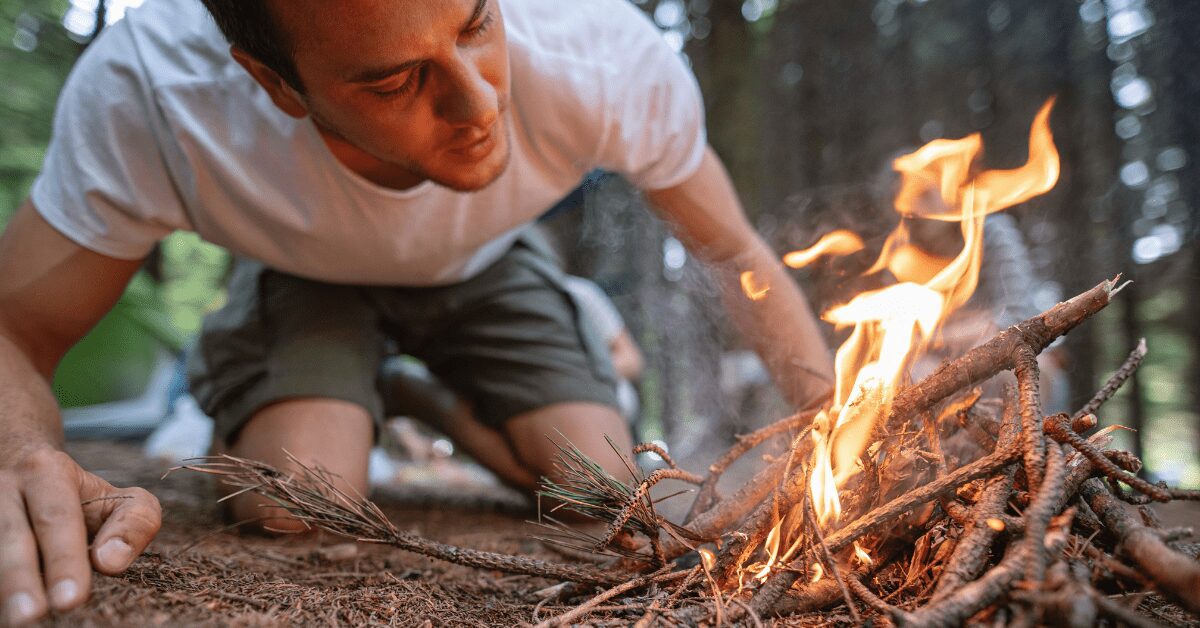Even though I grew up in a church that passed the plate every week, I didn’t begin to appreciate the significance of the offering until I worked at a Bible camp during college. At our camp we were divided into villages, and the counselors in each village were tasked with creating multiple worship services for their campers. Each service had to include all of the portions of the liturgy—including the offering.
I was initially a little perplexed by this idea since it was camp policy that no camper was allowed to bring money with them to camp. How do you do the offering with no money? This question really forced our counseling staff to understand the original purpose of the offering as a way to tangibly respond to God’s love for us. We came up with many creative offering ideas for our campers to consider.
- What are your talents? How can you offer them to one another during the camp week?
- How might creation care be an act of worship?
- Give specific affirmations to other campers to remind them they are children of God.
It was during these moments of offering that I felt like all of us, counselors and campers, really experienced offering as an act of worship that tangibly allowed us to express our love for God and our neighbors.
Fast forward ten years to 2019. The offering time in worship had all but lost its significance for me. As a millennial church-goer who gives exclusively online and doesn’t carry cash, the offering had become a really uncomfortable experience for me. I hated passing the plate and putting nothing in it. It precluded me from participating in this act of worship and opened me up to the scrutinous looks I often received from fellow church-goers who assumed I wasn’t giving at all. Yes, my church at the time had laminated cards that said “I give online”, but I often forgot to pick one up on the way into worship. And, even when I did, I can’t say putting a laminated card in the plate brought me any closer to the act of worship I had experienced at camp nearly a decade earlier. I realize that for some people passing the plate is an act of worship, but for me and so many others that’s not our experience.
How might we allow everyone to participate in the offering as an act of worship, not just those who give in person via cash or check?
Over the past year and half this issue has been compounded by the addition of online worship. Many church leaders have struggled to translate “the offering” into an online worship setting, opting to leave it out of the service entirely, and instead—made giving to the congregation more prominent before or after the service. The majority of those who did choose to include it in the worship service, did so for the sake of church sustainability. It became a sort of “infomercial” in the middle of the service with a three-step formula something like this:
- Invite people to give.
- Show a slide listing the many ways to give to the congregation.
- Share a heartwarming story about how these gifts are making an impact.
While I appreciate the information and stories of impact, and understand the need to keep congregations sustainable during this difficult time, I wonder if this practice has only underscored “the church’s need to receive” in favor of “the givers need to give”? I wonder if there’s a way to maintain financial stability while also creating a worship-filled offering moment whether online or in-person? What if we let go of the assumption that both actions had to happen in the same moment?
What if we made “offering as worship” the main goal and saw giving to the church as just one way to respond?
Prior to the pandemic, my church gave me a glimpse of what this might look like. As part of our worship service, when the time came for the offering we were invited to visit three different stations set up around the worship space.
- Station 1: An iPad equipped with a Square so people could give via credit card to support the church. This station also included a sign-up sheet with opportunities to volunteer.
- Station 2: Light a candle and say a prayer.
- Station 3: An activity based on the sermon to help us put the message into practice. The content of this station changed every week.
Enough time was allotted so we could visit all three stations if we wanted to. The offering was an act of worship, even if you never gave financially during the service.
During last fall’s Stewardship Kaleidoscope conference, Rev. Bruce Reyes-Chow shared his congregation’s similar pre-pandemic practice of having different stations available after communion for people to give of their money, sign-up to give of their time, offer a prayer, or have someone else pray with them. He also shared how his community brought the offering into online worship by inviting people into a “visual offering” over Zoom. Each week, he would invite people to bring something from their home into the worship space as part of the offering and showcase it in their Zoom window. For instance, on All Saints Day he invited people to bring a picture. Then, someone would be invited to talk about what they brought.
I see so many connections between this practice of “visual offering,” my congregation’s practice of an offering station to put the sermon into practice, and the offerings we led at camp in-person. Whether it’s showcasing an item on Zoom or offering a hug to a fellow camper, the offering should provide all of us with a way to tangibly respond to God’s love for us. Our finances offer us one way to do this, but it’s certainly not the only way.
What might this more creative version of the offering look like in your context?
- Stories: Invite people to share a story of a time when they have felt God’s peace or seen God at work. They can write them down or, better yet, share them in the chat during online worship or with a neighbor sitting next to them during in-person worship. Especially as we emerge from this time of communal trauma, these can be really uplifting reminders of how God is present.
- Vocations: Invite people to bring something to worship that represents their vocation(s) and bring it out during the offering to invite God into this work and consider how they might use these skills in response to God’s love.
- Time: Invite people to consider how they might use one hour this coming week to love their neighbor. This might be through a pre-existing volunteer commitment, helping a neighbor rake their leaves, praying for those who are sick, calling a loved one who is lonely, etc. Share tangible daily life examples — not just church volunteer opportunities.
- Privilege: Invite people to name any privilege they have. This could be due to their gender, race, ethnicity, employment status, socioeconomic status, etc. Invite them to consider ways they might work to dismantle these systems of oppression and live in solidarity with neighbors in need.
Some might say, “Grace, that’s all well and good, but won’t people think giving money to the church isn’t necessary if there are so many other ways to respond?” No, in fact, I think they will be delighted that God (and their church) wants to use all of them, not just their wallets. Restoring the offering to its original position as an act of worship also puts the onus on church leadership to tell the story of the church’s mission and vision throughout the service (and in other venues like new member gatherings, the church’s website and social media pages, etc.) as well as make the available giving methods prominent. You can’t relegate this story to just one moment in worship or one place on the website. Using a stations approach, whether it’s after communion or during the offering time, still offers the opportunity for those who want to give during worship to do so. As your congregation begins to find it’s “new normal” this fall, there’s no better time to experiment with breathing new life into this part of the liturgy.



